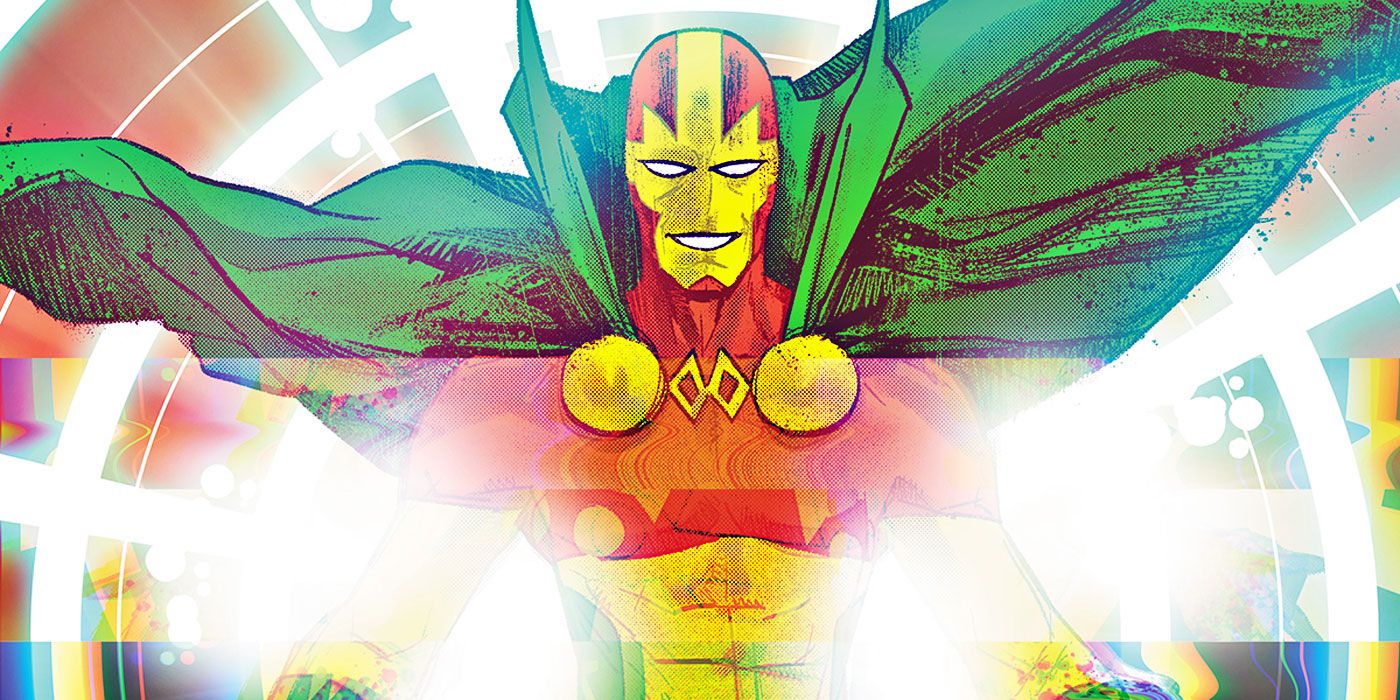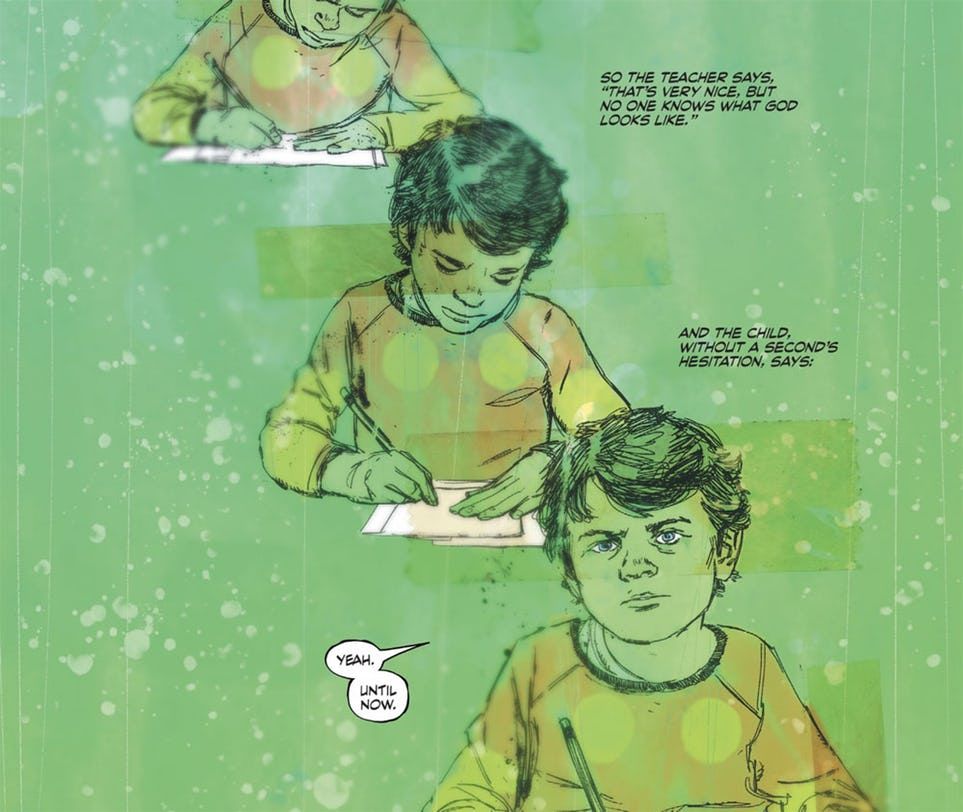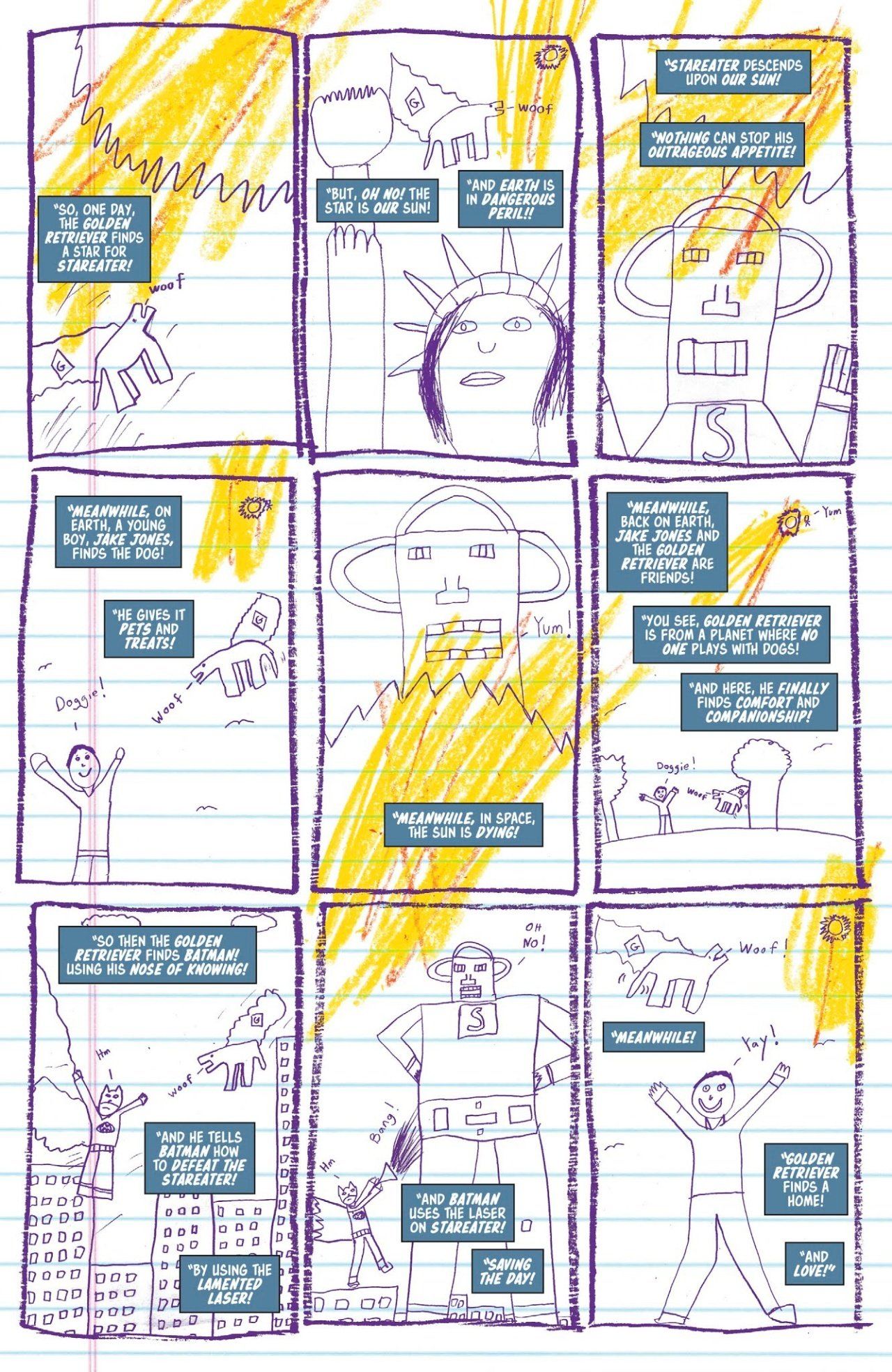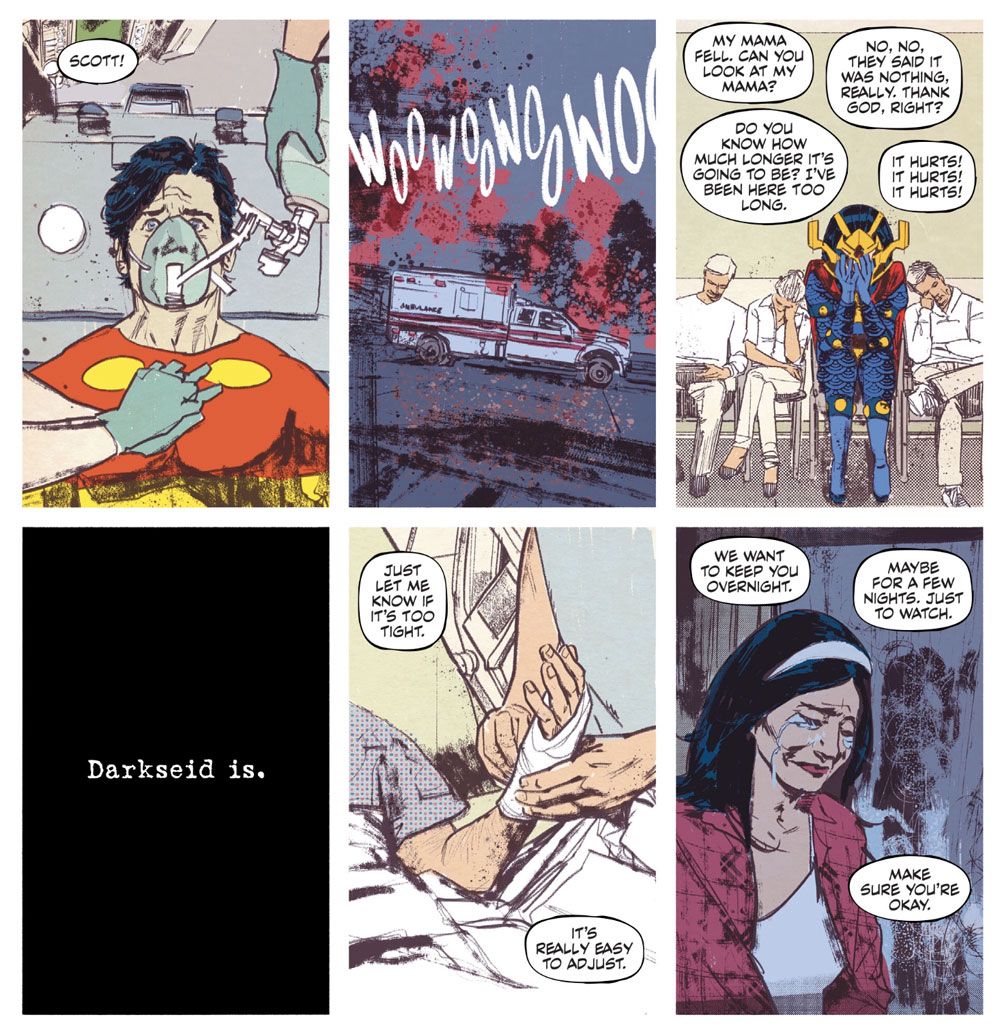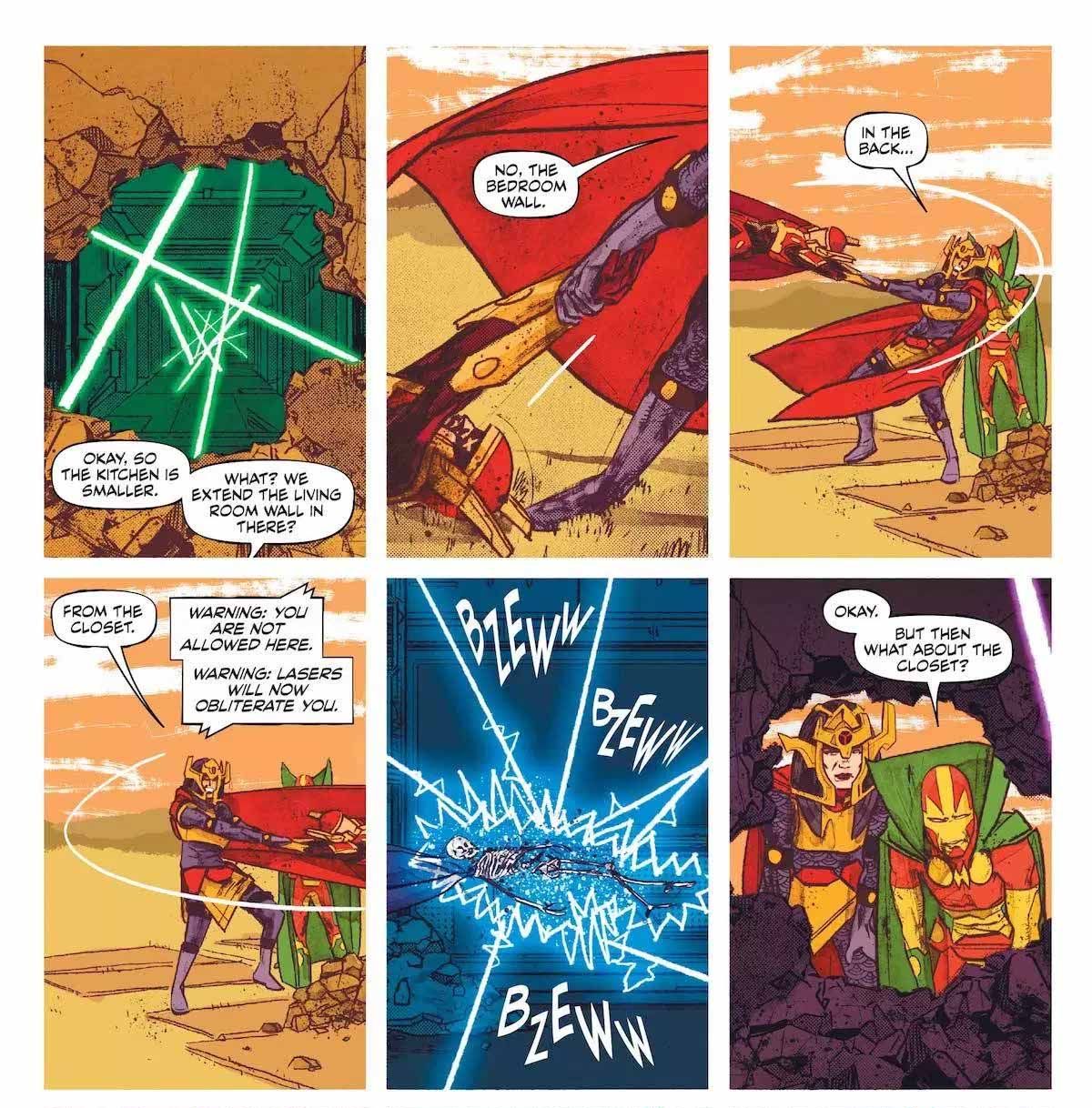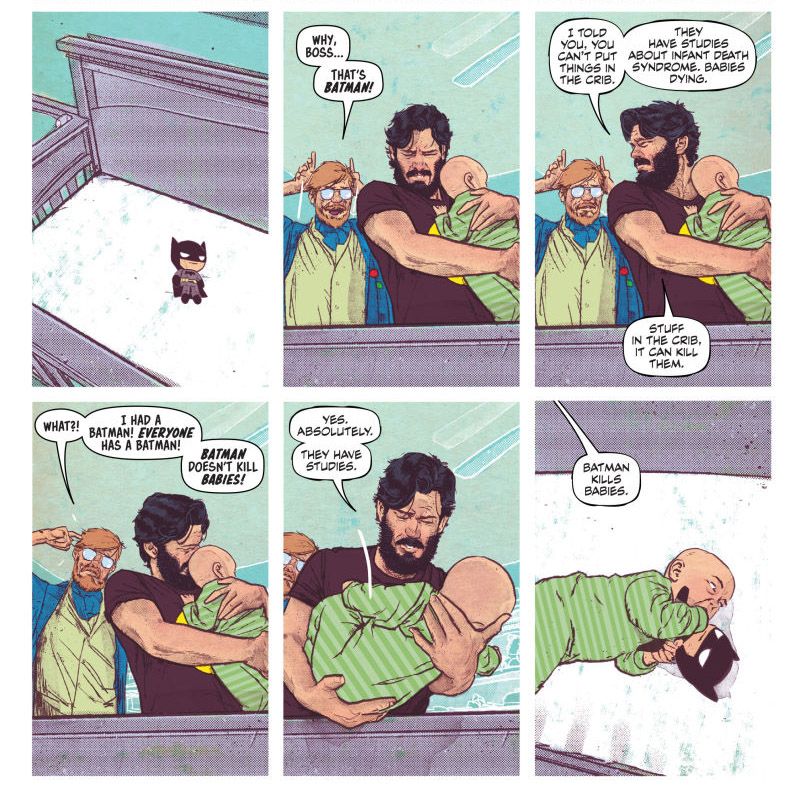SPOILER WARNING: The following article contains major spoilers for the entire 12-issue Mister Miracle limited series, by Tom King, Mitch Gerads and Clayton Cowles, on sale now.
After he and artist Gabriel H. Walta took The Vision to unthinkable new heights at Marvel, writer Tom King teamed once again with his Sheriff of Babylon collaborator Mitch Gerads to attempt to do the same for one of DC Comics’ lesser-known heroes: Scott Free, aka Mister Miracle.
Created in 1971, Mister Miracle is one of the New Gods that debuted in Jack Kirby’s Fourth World saga. Born to the Highfather of New Genesis, he was sent to live on Apokolips as the result of a bargain between his father and the Apokoliptian despot Darkseid. However, upon reaching adulthood, he managed to escape the hellish wasteland and flee to Earth, where he would become a super escape artist and eventually marry the former Female Fury Big Barda.
RELATED: Mister Miracle: Suddenly, Everything Makes Sense - Or Does It?
Now, with King and Gerads’ complete 12-issue Mister Miracle series available in a softcover collected edition, it seems more than appropriate to revisit what is arguably the most important superhero comic of this decade.
Weird Science
To say Mister Miracle is an experimental book would be an understatement. In fact, from a visual perspective, it pushes the limits of the comic book medium to their very core.
Beginning with Issue #1, we see Gerads take a different approach to his artwork, incorporating pieces of scotch tape over the face of a young Scott Free, almost as if they’re holding him in place atop a faded green background. Furthermore, there’s the recurring theme of panels becoming distorted, typically as an indicator that Scott’s reality is coming into question, that evokes memories of an old tube-style television’s static. Then, of course, you have the infamous black panels that bear nothing but an ominous phrase: “Darkseid is.”
Gerads wasn’t entirely alone in Mister Miracle’s unique visual feel, though. While King’s script certainly played a role, the writer also contributed to the imagery at times with some of his… stylized... doodles that have taken the convention scene by storm. The variant cover to Issue #10 features Scott sobbing at his son Jake’s first birthday party, and amidst the crayon scribbling on the wall behind him is an unmistakable, Tom King-drawn Krypto the Superdog. Inside the issue, King also illustrated a scene to match Funky Flashman’s childlike enthusiasm when the Stan Lee pastiche told Scott the story of a Golden Retriever attempting to satiate the hunger of a massive Stareater (think Silver Surfer and Galactus).
RELATED: Mister Miracle & Big Barda's [SPOILER] Is the Key to Ending the War With Apokolips
[valnet-url-page page=2 paginated=0 text='Mental%20Health%20and%20Slice%20of%20Life']
Breaking Down the Walls of Mental Health
The subject of mental health is something that has been tackled in comics before, to varying degrees of success, and Mister Miracle pulls no punches when it comes to shedding light on this sensitive subject matter.
Issue #1 begins with Scott having just survived an attempted (or possibly successful?) suicide. From a narrative perspective, it’s played as the super escape artist looking to cheat the final hereafter because, as he so bluntly explains to Glorious Godfrey, “No one escapes from death.” At least that’s how it’s played out at first.
As the series progresses, Scott’s legitimate depression becomes more apparent. Not only that, we also see how his actions affect those he loves, particularly Big Barda, who opens up in Issue #10 about the impact Scott’s suicide attempt had on her. She calls him a “selfish &%&@%&# bastard,” which – while it might seem harsh – is a very honest reaction. The act of taking one’s own life is a permanent solution to a temporary problem that robs loved ones of continuing to have you in their lives.
RELATED: Is Mister Miracle DC's Final Pre-Flashpoint Story - Or Something Else?
All things considered, Barda certainly isn’t unjustified in calling Scott selfish because, while he is the one who's a victim of mental health, he inadvertently turns her into a victim, as well. That both sides of this situation was shown so bluntly, even uncomfortably, in a mainstream superhero comic is practically unheard of.
Mister Mundane
Two popular comic book classifications are “capes and cowls” (books about superheroes) and “slice of life” (books that offer a realistic take on everyday life). While these themes sometimes intersect, books typically tend to fall into one category or the other. However, Mister Miracle doesn’t just blur the lines between the two – it erases the lines altogether.
For every fantastical moment in Mister Miracle, like the scenes depicting the war between New Genesis and Apokolips, there’s one that’s almost eerily relatable, like Scott and Barda sitting in traffic. And for each and every one of those moments, there’s one that smashes the two thematic elements together, like when Scott and Barda calmly discuss condo renovations while storming Apokolips in Issue #6.
RELATED: Mister Miracle and Big Barda Are Our Comics Relationship Goals
Highfatherhood
Superheroes becoming parents is hardly a foreign concept in comics. From the Fantastic Four to Batman to Superman, the precedent has long been set, but as the father of a two-year-old boy, I can honestly say I’ve never read anything that captured the essence of fatherhood quite like Mister Miracle.
[valnet-url-page page=3 paginated=0 text='Batman%20Kills%20Babies']
In Issue #8, Scott attempts to adjust to his new role as a parent, and while Gerads has said he and King drew inspiration from their own marriages to develop Scott and Barda’s dynamic, it’s clear they drew inspiration from their roles as fathers for the series, as well.
Like Scott and Barda, I’ve had to drive my son around at night to get him to go to sleep. I’ve also had to watch him turn red in the face because of how much he hated doing “tummy time” in order to help him learn to crawl. I’ve had to remove stuffed animals from his crib because of the risk of SIDS. In fact, my son even has the exact same Funko BvS Batman plush Scott takes out of the crib while telling Funky Flashman that Batman does, in fact, kill babies.
RELATED: Mister Miracle #12 Closes the Curtain on Scott’s False Reality - For Good
No superhero comic has delved into the minutiae of parenthood, especially early parenthood, quite like Mister Miracle. Nor has any modern superhero comic addressed everyday life and the struggles of mental health quite like Mister Miracle.
What began as a drunken conversation between King and DC co-publisher Dan DiDio at a bar in Baltimore has since become a masterclass in pushing the boundaries of comic books and storytelling to their absolute peak. Few things in recent memory even come close to Mister Miracle, and until King and Gerads’ next collaboration, it’s hard to imagine something that will.

